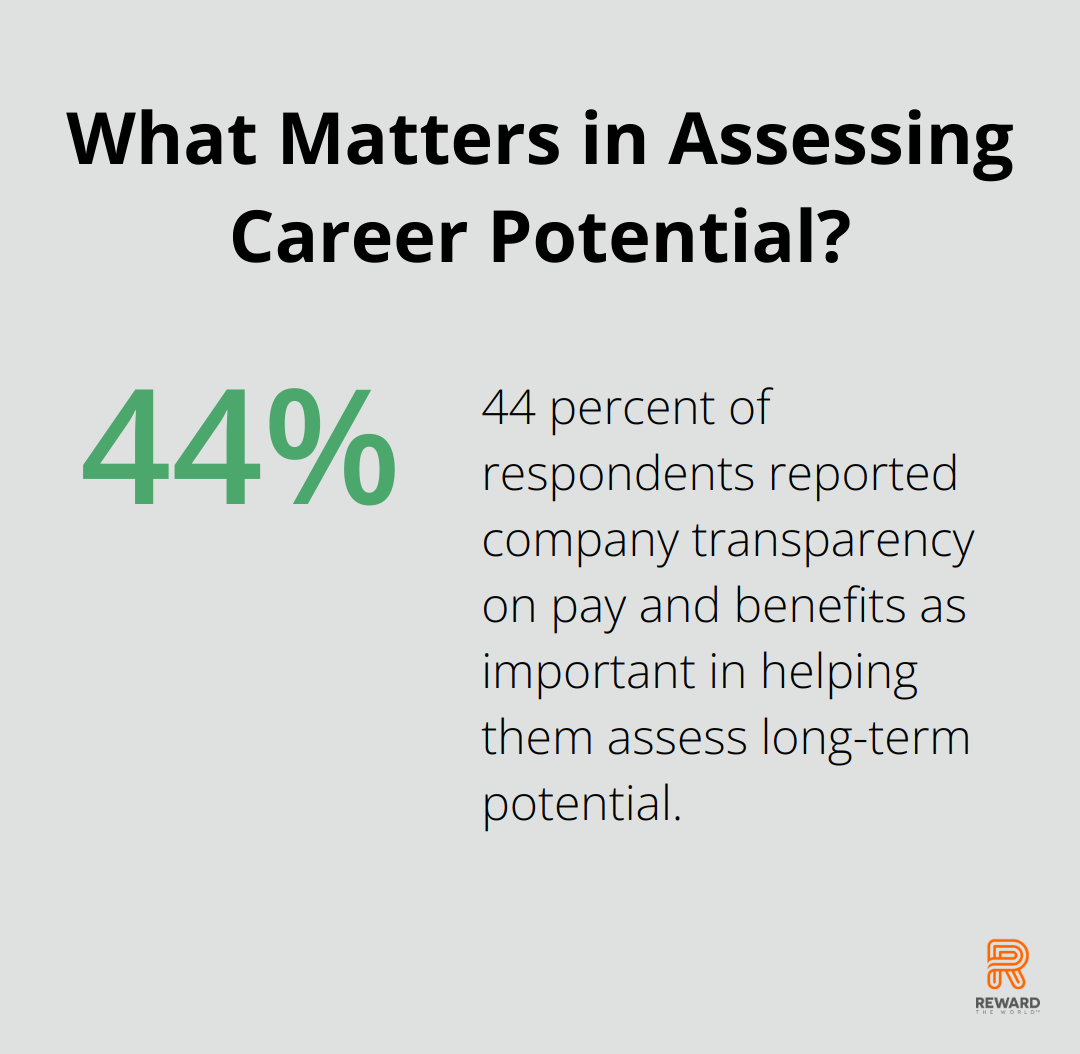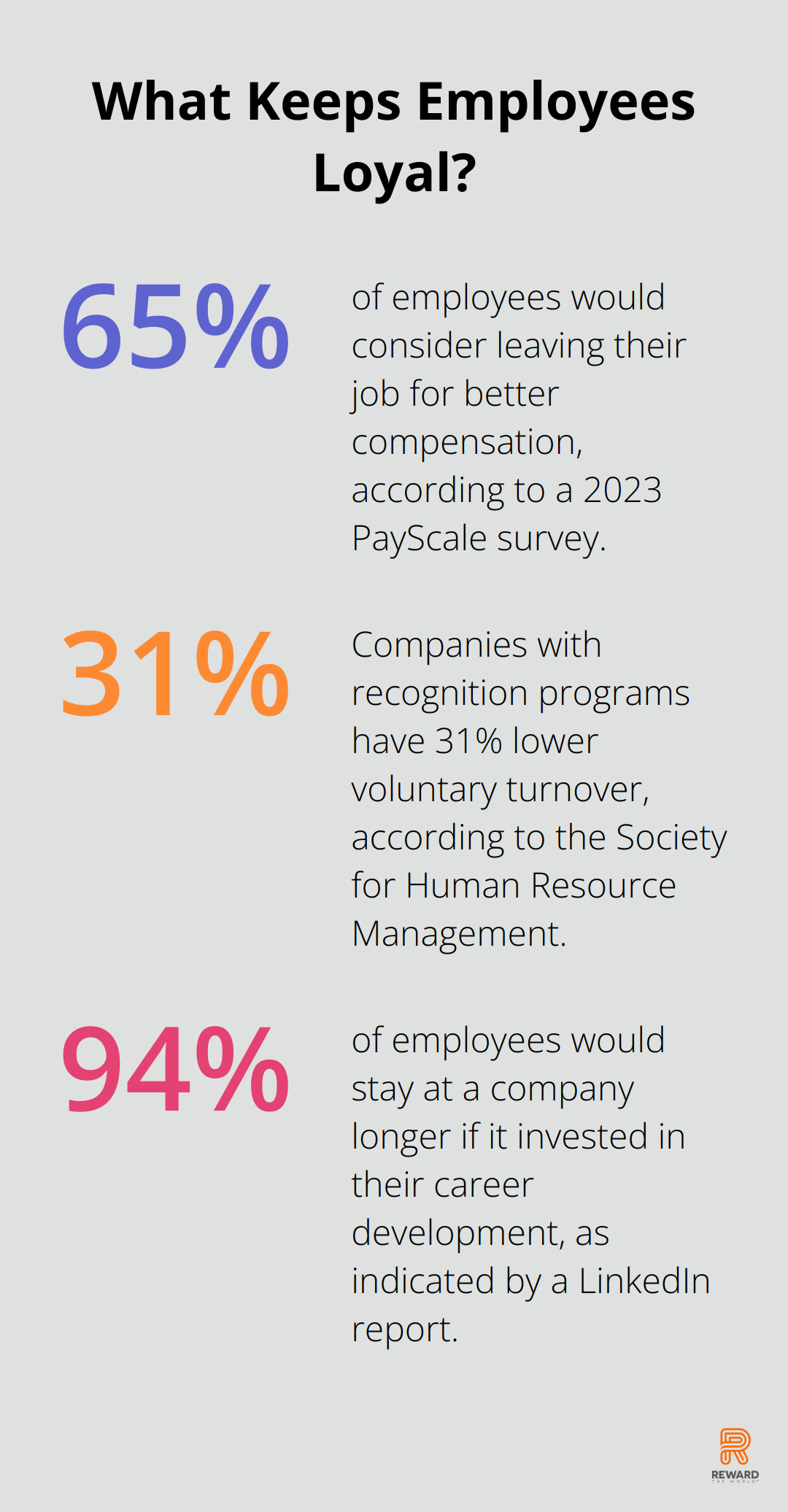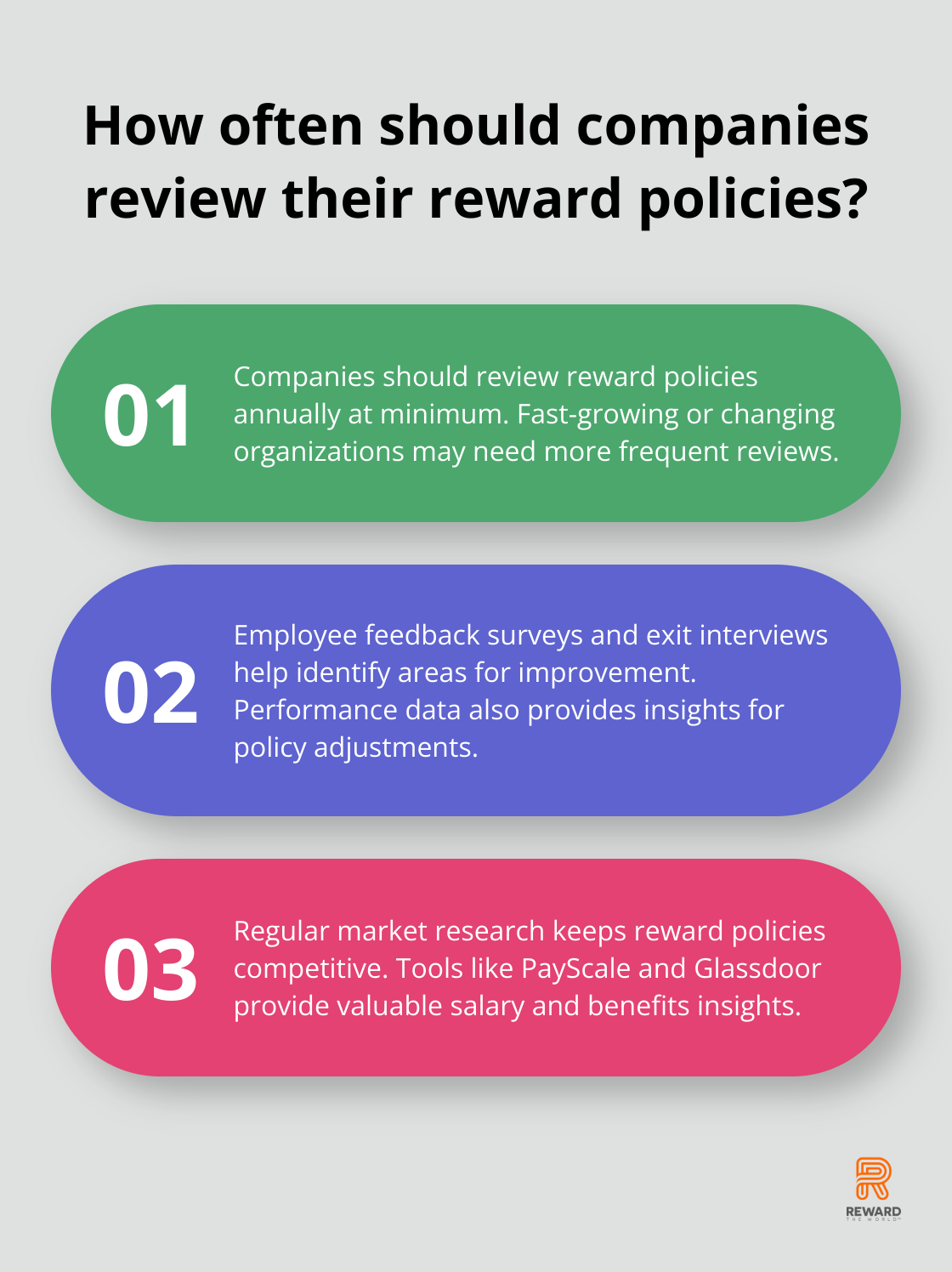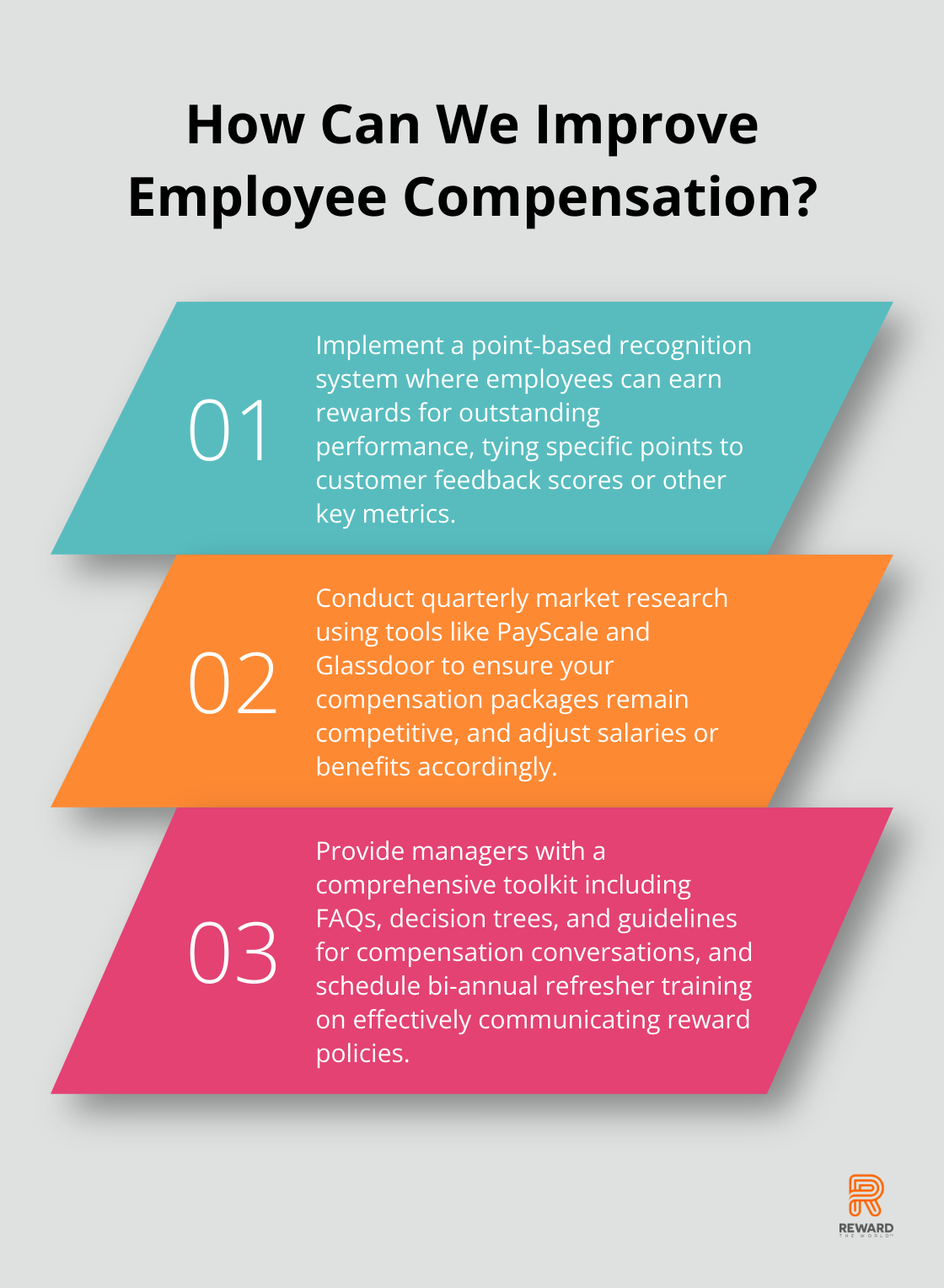
At Reward the World, we know that designing reward policies and strategies is crucial for organizational success. Well-crafted reward systems can align employee behavior with company goals, attract top talent, and boost motivation.
However, creating effective policies requires careful planning and execution. This post: Designing Reward Policies: Key Strategies for Success, will explore key strategies for developing reward policies that drive performance and engagement.
Why Reward Policies Matter
Driving Performance Through Alignment
Reward policies form the backbone of successful organizations. They’re not just about distributing paychecks; they’re strategic tools that shape company culture, drive performance, and attract top talent. Effective reward policies align employee actions with company objectives. For example, a software company aiming to improve customer satisfaction might tie bonuses to customer feedback scores. This direct link between rewards and goals motivates employees to focus on what truly matters to the business.
Multiple studies show that knowing how their salary was determined is more important to employees’ job satisfaction and trust in management than the actual amount of pay. This underscores the power of aligning rewards with company goals and maintaining transparency.
Winning the Talent War
In today’s competitive job market, attractive reward policies are essential for attracting and retaining top talent. According to a survey by Glassdoor, 44 percent of respondents reported company transparency on pay and benefits as important in helping them assess long-term potential.

To stand out, companies get creative. For instance, some tech firms offer unlimited vacation time, while others provide sabbaticals for long-term employees. These unique perks can be the deciding factor for a candidate choosing between multiple offers.
Boosting Engagement and Productivity
Well-designed reward policies don’t just attract talent; they keep employees motivated and engaged. A Gallup study revealed that companies with highly engaged workforces outperform their peers by 147% in earnings per share.
One effective strategy involves implementing recognition programs. These can range from simple “employee of the month” awards to more elaborate point-based systems where employees can earn rewards for outstanding performance. Such programs tap into the human need for acknowledgment and can significantly boost morale and productivity.
Customizing Rewards for Maximum Impact
One size doesn’t fit all when it comes to reward policies. Different employees (and different generations) value different types of rewards. While some might prioritize financial incentives, others might place more value on work-life balance or career development opportunities.
Companies that offer a diverse range of rewards (e.g., flexible working hours, professional development programs, and wellness initiatives) are more likely to satisfy a broader range of employee preferences. This approach not only increases overall job satisfaction but also helps in attracting a diverse workforce.
As we move forward, let’s explore the key elements that make up effective reward policies and how they contribute to organizational success.
What Makes a Reward Policy Effective?
At Reward the World, we understand the transformative power of well-designed reward policies. Let’s explore the key elements that make these policies truly effective.
Competitive Compensation
The foundation of any strong reward policy is competitive base pay. A 2023 PayScale survey revealed that 65% of employees would consider leaving their job for better compensation. Companies must regularly benchmark their salaries against industry standards to retain top talent. This doesn’t always mean offering the highest salaries, but rather providing a fair package that aligns with market rates and the value an employee brings to the organization.
Performance-Driven Incentives
Linking rewards to performance motivates employees powerfully. The Incentive Research Foundation found that properly structured incentive programs can increase performance by up to 44%. These incentives can take various forms, from annual bonuses tied to company profits to individual commissions based on sales targets. The key is to ensure these incentives are clearly defined, achievable, and directly tied to both individual and organizational goals.
Comprehensive Benefits Package
In today’s competitive job market, a robust benefits package can significantly differentiate employers. This extends beyond just health insurance and retirement plans. Innovative companies offer benefits like mental health support, financial wellness programs, and even pet insurance. A 2024 study by MetLife explores how strategic employee care can lead to outsized impact on employee well-being and talent outcomes.
Meaningful Recognition
Recognition programs boost morale and productivity cost-effectively. The Society for Human Resource Management reports that companies with recognition programs have 31% lower voluntary turnover. These can range from peer-to-peer recognition platforms to formal award ceremonies. The key is consistency and sincerity – recognition should be timely, specific, and aligned with company values.
Career Growth Opportunities
Career development opportunities are essential for long-term employee satisfaction and retention. A LinkedIn report indicated that 94% of employees would stay at a company longer if it invested in their career development. This can include mentorship programs, leadership training, or tuition reimbursement for relevant courses. Companies that invest in employee growth not only improve retention but also build a more skilled and loyal workforce.

Implementing these elements requires a strategic approach. It’s not just about offering the most expensive benefits or the highest salaries. Instead, it’s about creating a holistic reward system that aligns with your company culture, supports your business objectives, and meets the diverse needs of your workforce (what works for one company may not work for another).
Now that we’ve covered the key elements of effective reward policies, let’s move on to discuss how to implement and communicate these policies effectively within your organization.
How to Implement Effective Reward Policies
Conduct Regular Market Research
Regular market research keeps reward policies competitive. A creative approach to the timeliest salary market data solves unique pay challenges. This involves more than salary benchmarking. Companies should examine emerging trends in benefits, work flexibility, and non-monetary rewards.

Tools like PayScale, Glassdoor, and industry-specific salary surveys provide valuable insights. HR professionals often share anonymized data to get a clearer picture of the market. (Reward the World offers comprehensive market data analysis as part of its platform, making it a top choice for companies seeking accurate, up-to-date information.)
Prioritize Transparency
Transparency in reward policies builds trust. Pay process transparency and how an employee’s pay compares to the market rate are important factors in job satisfaction. Companies should clearly explain how they calculate and distribute rewards.
A total rewards statement for each employee can break down the full value of their compensation package (including base pay, bonuses, benefits, and non-monetary perks). This powerful tool showcases the true value of working for an organization.
Train and Empower Managers
Managers play a critical role in executing reward policies. Companies should invest in comprehensive training to ensure managers understand the nuances of the reward system and can communicate it effectively to their teams.
A manager’s toolkit with resources like FAQs, decision trees for common scenarios, and guidelines for compensation conversations proves invaluable. Regular check-ins and refresher courses help managers stay aligned with policy changes and best practices.
Review and Adapt Policies Regularly
Reward policies should not remain static. Companies should set up a regular review cycle – annually at minimum, but more frequently for fast-growing or changing organizations. Employee feedback surveys, exit interviews, and performance data help identify areas for improvement.
Industry disruptors require attention. For example, the rise of remote work has prompted many companies to rethink their location-based pay scales. Organizations should prepare to adapt their policies to stay competitive in a rapidly changing landscape.
Use Technology for Efficiency
Technology streamlines reward management and improves the employee experience. HR management systems like Workday or ADP automate many aspects of reward administration, from payroll to performance-linked bonuses.
For recognition programs, platforms facilitate peer-to-peer recognition and make rewards more visible and engaging. These tools often provide valuable analytics to help measure the impact of reward initiatives.
Final Thoughts
Designing reward policies and strategies forms the foundation of organizational success. Well-crafted reward systems shape company culture, drive performance, and attract top talent by aligning rewards with company goals. Effective policies include competitive compensation, performance-driven incentives, comprehensive benefits, meaningful recognition, and career growth opportunities.

Successful implementation requires regular market research, transparency, manager training, and efficient technology use. Organizations must continuously evaluate and adapt their policies to remain effective in a changing business landscape. Companies with well-designed reward policies often experience improved employee engagement, higher productivity, and better business outcomes.
For organizations aiming to elevate their reward strategies, Reward the World offers a comprehensive solution. Our platform provides businesses with tools to create impactful reward programs that drive customer loyalty, increase sales, and enhance employee recognition (through global reach and instant reward delivery). Explore how Reward the World can transform your reward policies today.
